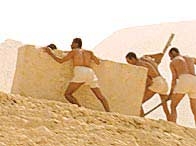 |
| Mr. Tran Dinh Cuong’s family (Phu Nhuan, Ho Chi Minh City) has installed and been using a 200-liter solar water heater for the past two months – Photo: Thu Thao |
“It’s as easy as using a TV” – Mr. Trinh Quang Dung, head of the solar power development department (Ho Chi Minh City Institute of Physics), speaks about the current use of solar energy products and devices…
Residents Can Assemble It Themselves
To have a solar power system, the most important components are the solar thermal panels and the conversion of thermal energy into electricity. Currently, there are no domestic manufacturers producing these solar panels, and most are imported.
In Ho Chi Minh City, there are two suppliers of solar power equipment: Solarlab (Ho Chi Minh City Institute of Physics, 1 Mac Dinh Chi, District 1) and SEL-CO (an American company, 164 De Tham, District 1). Engineer Nguyen Duc Tho from Solarlab states that a solar power system includes panels, batteries, an inverter, and a control unit.
Electricity generated from the solar panels is directed to and stored in the battery system. From there, the inverter converts the 24-volt direct current from the batteries into 220-volt alternating current. Users simply need to turn on the control unit to use solar power.
At Solarlab, the price of a solar power system ranges from 9 million to several hundred million VND, depending on the scale and power capacity. For instance, the lowest-priced system (9 million VND) can power four light bulbs and a cassette player. Those purchasing smaller systems can assemble them using provided instructions without needing a technician.
In addition to household electricity, scientists at Solarlab also use solar power to charge batteries for ambulances. These vehicles have been deployed in Dak Lak at a cost of approximately $10,000 each.
Solar power is also used to run generators for tourism boats in Hoi An and water pumps for some households in Dak Lak and Ho Chi Minh City (capable of pumping water from depths of 25-30 meters to the surface).
Moreover, solar water heaters are becoming increasingly popular, with prices (due to domestic design and assembly) trending down to one-third of previous costs.
Cookers and Water Filters: Two-in-One
Currently, Petech Company has begun producing solar cookers. The cooker features a parabolic dish made of stainless steel with a diameter of 1.5 meters, mounted on a support stand. The entire system is designed to automatically rotate to follow the sun’s movement.
The light reflected by the parabolic dish is concentrated at the cooking point, enabling faster heating compared to other types of cookers, with temperatures reaching 120-150°C (cooking rice can take about 15 minutes).
Additionally, to utilize the “solar” cooker when not cooking, the research group has also designed a brackish water distillation unit, which includes a condenser and a carbon filter to purify water.
Steam passes through a spiral condenser to produce fresh water, with an average of 10 liters of saltwater yielding 7 liters of fresh water.
The cost of a solar cooker is 950,000 VND (for the automatic parabolic type) and 450,000 VND for the non-automatic type (where users must manually adjust the parabolic dish). If used with a 120-liter pure water filter, the total price is 2.5 million VND per set.
However, to use the solar cooker, the cook must wear a hat and of course, it can only be used when there is plenty of sunlight. This type of cooker is currently available and sold in several provinces such as Binh Thuan, Lam Dong, and Truong Sa district (Khanh Hoa)…
THU THAO

















































